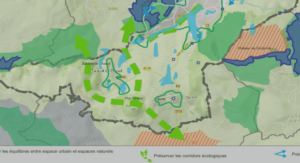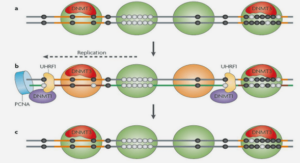The Guatemalan Center of Crop Genetic Diversity
In his pioneering study of Mesoamerican plant life, the eminent Russian botanist, N.I. Vavilov (1931) identified nearly seventy species of cultivated crops that he believed to have originated in southern Mexico and Central America. He christened the region a center of origin for agriculture and a modern center of crop diversity. Several crops of global significance were domesticated in the region, including numerous species of beans, squash, and red peppers, maize, cotton, sisal, cherry tomato, chayote, cacao (or chocolate), avocado, guava, sapote, and vanilla (Vavilov, 1931; Wilkes, 2004). In reference to the rich diversity both among and within crop species, ecologists recognize Mesoamerica as a “megacenter” of biological diversity (Perales et. al, 2005: 949). Maize – or “corn” as it is known in North American parlance – is arguably the most important crop to emerge from Middle America. Along with rice and wheat, maize is one of humankind’s three main staple cereal crops. Though more acreage is allocated to rice and wheat, more maize is harvested than any other crop in the world, thanks to its comparatively larger grains and higher yields (FAPRI, 2006). 2 In total, some 700 million metric tonnes of maize were produced in 2006, the equivalent of 220 pounds for every living human. 3 Most of the maize that is currently cultivated in the world is the product of modern, high-yielding seed varieties. The seeds account for three-quarters of maize acreage worldwide, and a larger proportion of global production (Morris, 1998). Most of these varieties were derived from genetic material developed by farmers in the crop’s
Mesoamerican cradle of origin (FAO, 1992).
The Biological Origins of Maize
While there is a widespread consensus among crop scientists that the indigenous people of the Mesoamerican region domesticated maize some 6,000 – 9,000 years ago, the biological origins of the crop are hotly disputed (Wilkes, 2004; Brush, 2004). As Wilkes (2004) explains, the debate surrounding the domestication process for maize revolves around the role played by its closest relative, teosinte, a wild grass that is endemic to the western escarpment of southern Mexico and northern Guatemala. The two plants are remarkably similar – “Corn is 90% teosinte and teosinte is 90% corn,” writes Wilkes (2004: 18) – and hybridizations are common in areas where the two species exist. The question is whether teosinte is a progenitor to maize and, if so, whether it was crossed with another plant species to create maize. Perhaps the most prevalent theory, one initially offered by Paul Ascherson in the late nineteenth century and popularized by George Beadle in the 1930s and currently championed by John Doebley, is that maize is a direct descendant of teosinte and that no other plants were involved in its domestication. In the 1930s, the famed botanist Paul Mangelsdorf and his colleagues (Mangelsdorf and Reeves, 1939; Mangelsdorf and Cameron, 1942) offered an alternative theory known as the “Tripartite Hypothesis.” According to Mangelsdorf, teosinte is not the progenitor of maize, but rather its hybrid progeny. Maize, he argues, is not a domesticated version of teosinte, but rather a hybrid of Tripsacum (another wild grass related to maize) and a now-extinct wild pod corn. Though Mangelsdorf’s “Tripartite Hypothesis” has slowly unraveled over the years, Mary Eubanks (2001) has given it a new twist with her recent finding that maize represents a hybridized form of teosinte and Tripsacum. Eubanks’ claim, however, remains contentious among maize biologists. Despite seven decades of research, the process by which Native Americans domesticated maize remains a partial mystery.




